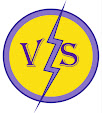 |
| Introduction to Linux |
Introduction to Linux
The History of Linux
Linus Torvalds, a student at the University of Helsinki Finland, introduced Linux in 1991. Towards work on the Linux project and wrote the source code of Linux kernel. Linux is a free operating system. Awards made Linux available on the internet. Many programmers added to the code, change it, and built it support for all kinds of hardware. He released the system to a community of “hackers” on the internet and asked them to work with it, fix it and enhance it. In fact, today there are thousands of software developers around the world who have worked on it will stop the source code for the software is freely available, anyone can work on it. Developers are encouraged to feed their fixes and improvements back into the community so that planets can continue to grow and improve.
Linux is like a clone of Unix and has been written from scratch by Linus Torvalds. Torvalds, mainly used Minix, a miniature version of Unix as a teaching aid in Universities and colleges. He was very much impressed with the feature of the Unix operating system. He wanted to create his own version of the Unix operating system and distribute it free for use to everybody. There is a vast amount of software that can be used with Linux, all of which include features that can compete with or surpass doze off any other operating system in the world.
Linux is very similar to Unix. Unique started off as a single-user operating system. In 1969, Ken Thompson, by taking ideas and help from Dennis Ritchie and others, wrote a small, general-purpose operating system for small machines. In 1973, Thompson and Ritchie rewrote the Unix operating system in C in ways of writing an operating system in assembly language. In 1974, Unix was licensed to universities for educational purposes and later on, was made commercially available.
Torvalds has made the source code of the Linux kernel available for study and charges over the internet. This means that the current development version of Linux is always open to everybody. Torvalds also accepts modification to the kernel code. In order to maintain stability, Torvalds exercised strict quality control and must all the new code into the kernel. The internet has played a major role in the development of the Linux operating systems. Today, many companies provide support for Linux over the internet.
Features of Linux
Linux has lots of interesting features. Some important features are as follows :
Linux is a multi-user operating system. Here, more than one user can connect to the system and work concurrently at any point in time. Each user can have more than one program running simultaneously. Users can also have their own environments arranged, the way they want, their own directory for storing files, and their own desktop interface with icons, menus, and applications arranged to suit them.
Linux supports multiprogramming, which allows many programs to executed simultaneously by different users. Multiprogramming is made possible on the Linux system by the concept of time-sharing. The operating system has to manage the different programs to be executed.
A program in Linux is broken into tasks, each task being something like reading from or writing to the disk or waiting for input from a user. The operating system which has the ability to handle the exclusion of multiple tasks is known as multi-tasking.
Linux is Posix-compliant and supports most of the standard sets for UNIX systems.
Linux is a powerful framework for working with graphical applications and it's referred to as the x-windows system.
Linux has a program called DOSEMV. It creates a DOS emulator that can execute many DOS applications. DOSEMV users image files of a hard disc to emulate a dost hard disc so that you need not have a DOS partition.
Linux comes with the Apache Web Server that service web pages full stop it is the most popular web server in use today.
Linux also comes with a lot of other useful and free software such as text editors, Browsers, and scientific applications.
Linux can be installed in several machine profiles without the need to configure the software.
No virus can attack Linux since common users don't have access to the system’s main Kernel.
!!!! Thanks for reading. !!!!










0 comments:
Post a Comment